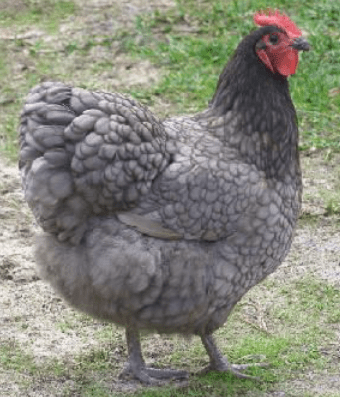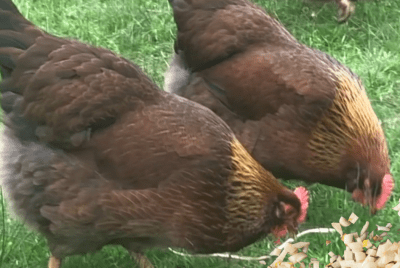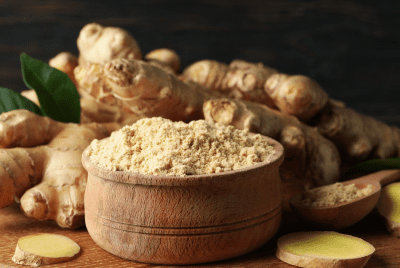Blue Australorp Chickens
Blue Australorp Chickens
1. Introduction to Blue Australorp Chickens

1.1. Overview of the Breed
Blue Australorp chickens are a breathtaking variant of the Australorp breed, is not just a visual delight but a symbol of robust utility and adaptability. Originating in Australia, these chickens are renowned for their excellent egg-laying abilities and striking appearance. Their journey from being farmyard staples to sought-after backyard birds illustrates a story of resilience and versatility. This breed’s adaptability to various climates and settings makes it a favorite among poultry enthusiasts worldwide. Their origin, intertwined with the agricultural heritage of Australia, showcases a remarkable transition from practical utility to widespread popularity, embodying the spirit of resilience and adaptability.
1.2. Distinct Features of Blue Australorp Chickens
Blue Australorp Chickens are a mesmerizing sight with their unique plumage. The blue hue of their feathers, a genetic variation, ranges from a deep slate to a lighter sky blue, often shimmering in the sunlight. This coloration sets them apart from their more commonly known black Australorp counterparts. These birds are not only about their stunning appearance; their robust build, strong legs, and bright red combs make them both aesthetically pleasing and physically resilient. The allure of the blue Australorp lies not just in its beauty but also in its hardy nature, making it a preferred choice for those seeking both visual appeal and practical utility in their poultry.
2. Comparing Black and Blue Australorp Chickens
2.1. Color Variations
The primary difference between blue and black Australorps lies in their feather color. While black Australorps have a uniform, glossy black plumage, blue Australorps exhibit a unique blue shade that can vary from bird to bird. This color difference is due to a genetic mutation affecting the pigmentation of the feathers, resulting in the blue variety’s distinctive and captivating appearance. However, it’s not just the color that sets them apart; subtle differences in their feather structure can also be observed, with the blue variety often having a slightly different sheen and texture compared to their black counterparts.
2.2. Other Differences Beyond Color
Apart from their striking color differences, blue and black Australorps share many similarities. However, some poultry enthusiasts believe that blue Australorps may exhibit a slightly more docile temperament compared to their black counterparts. This difference, though subtle, can be significant for those looking for a calm, friendly breed for backyard farming or as pets. In terms of egg production, both varieties perform similarly, making them both excellent choices for those seeking high egg yields. It’s essential to note that the differences in temperament and other physical characteristics can vary from individual to individual rather than being consistent across the breed.
3. Characteristics of Blue Australorp Chickens

3.1. Temperament
The temperament of Blue Australorp chickens is one of their most endearing qualities. Known for their calm, friendly nature, these birds are excellent for families, beginners in poultry keeping, and those who enjoy interactive backyard chickens. They are not only easy to handle but also exhibit a curious and engaging personality, often seeking attention and showing a degree of affection towards their keepers. This gentle demeanor makes them ideal for those who seek a more interactive and personable experience with their poultry, as well as a peaceful addition to any mixed flock.
3.2. Physical Attributes
Blue Australorps are recognized for their robust and hardy build, which is one of the key factors contributing to their popularity. They have a well-proportioned body, with a broad back and deep chest, indicative of their strong heritage as utility birds. Their feathering is dense, providing them with good insulation and making them suitable for various climatic conditions. The contrast between their bright red comb and wattles and the blue plumage is striking and adds to their overall aesthetic appeal. These physical attributes are not just for show; they play a crucial role in the bird’s health and well-being, enabling them to thrive in different environments and maintain consistent egg production.
4. Egg Production: Blue Australorp Chickens
4.1. Egg Color and Quality
Blue Australorp chickens are celebrated for their egg-laying prowess. They produce a significant quantity of light brown eggs, known for their consistency in size and excellent shell quality. The eggs are not just plentiful but also nutritious, with a rich, flavorful yolk that is highly sought after by poultry enthusiasts and culinary aficionados alike. This high-quality egg production makes the blue Australorp a top choice for those looking to sustain a reliable source of fresh, homegrown eggs.
4.2. Annual Egg Production Rates
One of the most remarkable aspects of the blue Australorp is its prolific egg-laying capacity. A healthy hen can lay approximately 250 to 300 eggs per year, making them one of the most productive egg-laying breeds. This remarkable rate is consistent throughout the year, with only slight decreases during the colder months. Their resilience in various climates contributes to this steady production, making them an excellent choice for those seeking a reliable egg supply. This prolific nature, combined with the quality of their eggs, underscores why blue Australorps are highly valued in both commercial and backyard settings.
5. Raising Blue Australorp Chickens
5.1. Housing Needs
Blue Australorps, with their adaptable nature, thrive in various housing conditions. They are comfortable in both free-range environments and confined spaces, as long as they have adequate room to roam and forage. A secure and well-ventilated coop is crucial to protect them from predators and adverse weather. Providing them with perches, nesting boxes, and a clean living area not only ensures their physical well-being but also promotes healthy laying habits. Their ability to adapt to different housing conditions makes them a versatile choice for both rural and urban chicken keepers.
5.2. Feeding and Nutrition
Proper nutrition is essential for maintaining the health and productivity of blue Australorp chickens. A balanced diet, rich in protein, vitamins, and minerals, is necessary, especially during their growing and laying phases. In addition to commercial poultry feed, they benefit from fresh vegetables, fruits, and occasional treats like mealworms or grubs. Access to clean, fresh water at all times is crucial, particularly in warmer weather, to prevent dehydration and maintain overall health. Tailoring their diet to their specific life stage and needs will ensure they remain healthy, happy, and productive.
6. Health and Wellness for Blue Australorp Chickens
6.1. Common Health Issues
Blue Australorps are generally a hardy breed but, like all chickens, they can be prone to certain health issues. Parasitic infections, respiratory problems, and common poultry diseases are some of the concerns to be aware of. Regular health checks and maintaining good hygiene in their living environment are key to preventing these issues. Observing their behavior and physical condition regularly can help in early detection and treatment of any health problems.
6.2. Preventative Care
Preventative care is crucial for sustaining the health of blue Australorps. This includes routine vaccinations, deworming, and parasite control. Regular cleaning and disinfecting of their living quarters, along with providing a balanced diet and clean water, are essential for preventing diseases. Monitoring their interaction with other birds and managing stress levels also play a significant role in maintaining their well-being.
7. Breeding Blue Australorp Chickens
7.1. Breeding Tips
Breeding blue Australorps can be a delightful and rewarding endeavor. Selecting healthy, well-tempered birds with desirable traits is key. Understanding the basics of chicken genetics, particularly regarding the blue coloration, is important for successful breeding. Providing a stress-free environment, proper nutrition, and adequate space are essential for encouraging healthy breeding behaviors.
7.2. Genetic Considerations
The genetics of the blue Australorp’s feather color is fascinating. The blue color results from a dilution of the black gene, and breeding two blue Australorps doesn’t always guarantee blue offspring. This genetic variance can result in chicks of various colors, including black, blue, and splash, making each breeding season an exciting experience. Understanding these genetic nuances is vital for anyone interested in breeding blue Australorps.
8. Social Behavior of Blue Australorp Chickens
8.1. Interaction with Humans
Blue Australorps are known for their friendly and sociable nature, making them excellent companions for humans. They enjoy interacting with their keepers and can be quite affectionate, often seeking attention and responding well to handling. This makes them not only a joy to raise but also ideal for educational purposes, especially in settings where interaction with animals is encouraged.
8.2. Dynamics in a Flock
Within a flock, blue Australorps exhibit a peaceful demeanor. They tend to get along well with other chicken breeds and are rarely aggressive, making them a great addition to a mixed flock. Understanding and managing the social dynamics of a flock is crucial for ensuring harmony and preventing bullying or stress among the birds.
9. Advantages of Raising Blue Australorp Chickens
9.1. For Egg Production
Blue Australorps excel in egg production, making them an ideal choice for those looking for a consistent supply of fresh eggs. Their ability to lay a large number of high-quality eggs throughout the year is one of their most appealing traits. This, combined with their hardiness and adaptability, makes them particularly suitable for a variety of settings, from small backyard coops to larger farming operations.
9.2. As Pets and Show Birds
Aside from their utility, blue Australorps also make wonderful pets and show birds. Their stunning appearance, friendly temperament, and ease of handling make them popular in poultry shows. They are also a great choice for families or individuals looking for a pet chicken breed that is interactive and easy to care for.
10. Conclusion and Final Thoughts
In summary, blue Australorp chickens are an excellent choice for a wide range of poultry enthusiasts. Their unique blue plumage, coupled with their friendly nature and impressive egg-laying capabilities, make them a valuable addition to any flock. Whether you are interested in egg production, seeking a pet chicken, or participating in poultry shows, blue Australorps offer a combination of beauty, utility, and companionship.
FAQs
1. How do blue Australorp Chickens fare in different climates?
Australorps are adaptable to various climates, thanks to their dense plumage and robust nature. They do well in both colder and warmer environments.
2. What is the ideal diet for blue Australorps?
A balanced diet rich in protein is ideal, especially during their growth and laying periods. This should be supplemented with fresh greens and occasional treats for optimal health.
3. Are Blue Australorps Suitable for beginners?
Yes, their calm temperament and hardiness make them an excellent choice for those new to poultry keeping.
4. How much space do blue Australorps need?
While adaptable to different space sizes, they thrive when they have enough room to forage and explore. A spacious coop and secure outdoor area are ideal.
5. Can blue Australorps be kept in urban settings?
Yes, due to their adaptable nature and relatively calm temperament, they are suitable for urban backyard poultry keeping.















